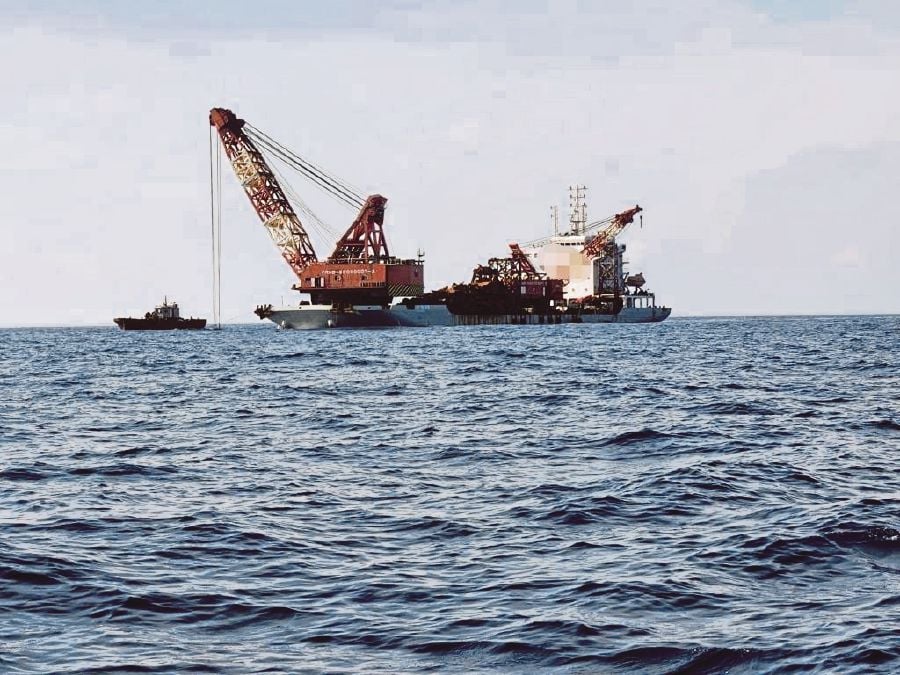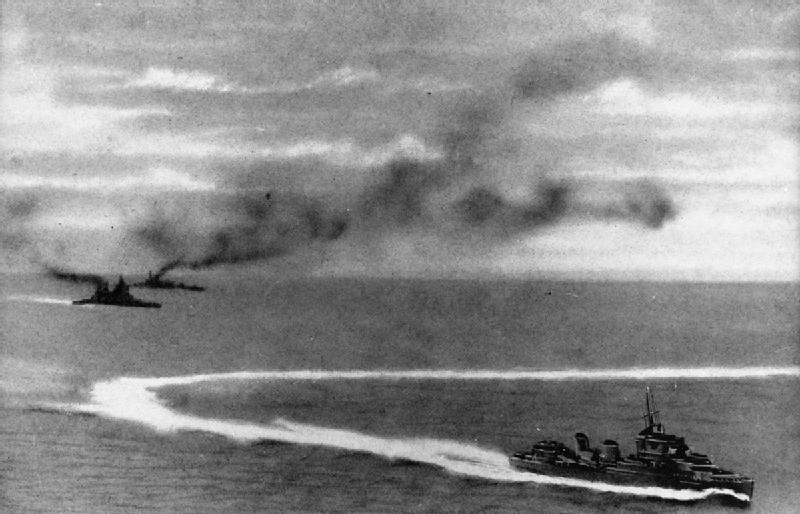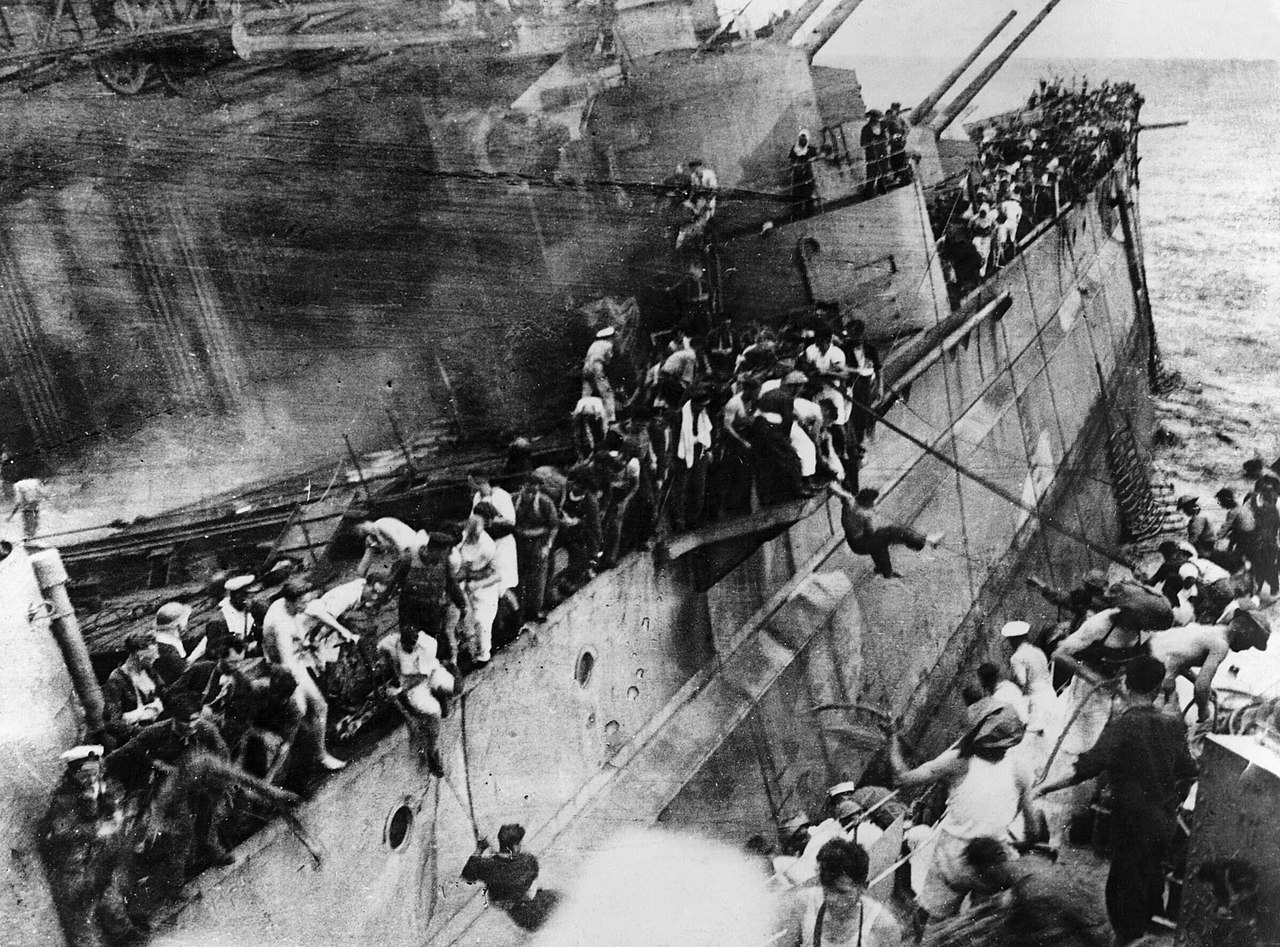
An illegal Chinese salvage operation is raiding two United Kingdom World War II warship wrecks off the coast of Malaysia for scrap steel, aluminum and brass fittings, prompting a statement of concern from the Royal Navy, USNI News has learned.
Chuan Hong 68 used a large dredging crane to pluck scrap from the wrecks of battleship HMS Prince of Wales (52) and battlecruiser HMS Repulse, according to local press reports. Both were sunk on on Dec. 10, 1941, days after Pearl Harbor, by Japanese bombers, resulting in the loss of 840 sailors.
Professional diver Hazz Zain flagged the illicit commercial operation local authorities after local fisherman spotted the dredger over the wreck sites, reported the New Straits Times this week.
The illegal salvage has thrown a sharp spotlight on how vulnerable historic heritage sites are to thieves intent on plundering war graves, the director general of the Museum of the Royal Navy said in a Tuesday statement.
“What we need is a management strategy for the underwater naval heritage so that we can better protect or commemorate these ships. That may include targeted retrieval of objects,” Dominic Tweddle said.
“If resourced correctly, the existing Royal Navy loss list can be enhanced to be a vital tool to begin to understand, research and manage over 5,000 wrecks before they are lost forever.”

The wreckage site is in the extended economic zone of Malaysia. Authorities there told news organizations they are investigating the reported looting of the two ships and the discovery of material in a beachside scrap yard that could have been from them.
The battleship is resting upside down in 223 feet of water near Kuantan in the South China Sea. The wreckage of the battlecruiser is several miles away.
News reports from the U.K. and Australia say salvage vessel Chuan Hong 68 was dredging with a deep-reach crane for the “high-quality steel” used to build the two warships. The steel could be smelted for other uses. The value comes from the steel’s production before the use of nuclear weapons and testing and is important for use in manufacturing some scientific and medical equipment.
The salvage vessel has been operating in the region since early this year, new agencies reported.
British news organization have often reported about previous illegal dredging of this site and others for steel, copper and specially manufactured propellers. For example, The Guardian reported six years ago that at least 40 vessels have been destroyed in these operations.
In addition to the British warships, the same waters off Indonesia and Singapore contain wreckage sites of 40 Australian, Dutch and Japanese warships and merchantmen that have already been destroyed.

New Straits Times reported that Chuan Hong 68 “is also wanted by Indonesian authorities for plundering the remains of sunken Dutch warships HNLMS De Ruyter, HNLMS Java and HNLMS Kortenaer in the Java Sea.”
The U.S. Navy has also expressed concern over its own wrecks in the Western Pacific. To the south, cruiser USS Houston (CA-30) and Australian warship HMAS Perth sank a few months after Prince of Wales and Repulse during the Battle of Sunda Strait on March 1, 1942. More than 650 U.S. sailors and Marines died when Houston sank, and more than 350 died when Perth sank.
The U.S. and Australia have worked with Indonesia to preserve the sites as war graves, USNI News has reported.
Five years ago, the U.K. Ministry of Defense was so concerned over the illegal dredging of wreckage sites, scavenging and looting that it dispatched a task force of survey vessels to the region to investigate the wrecks’ status. The ministry said then it would also monitor the water by satellite to keep track of activity near the sites.
“We are upset at the loss of naval heritage and the impact this has on the understanding of our Royal Navy history,” Twiddle said.





